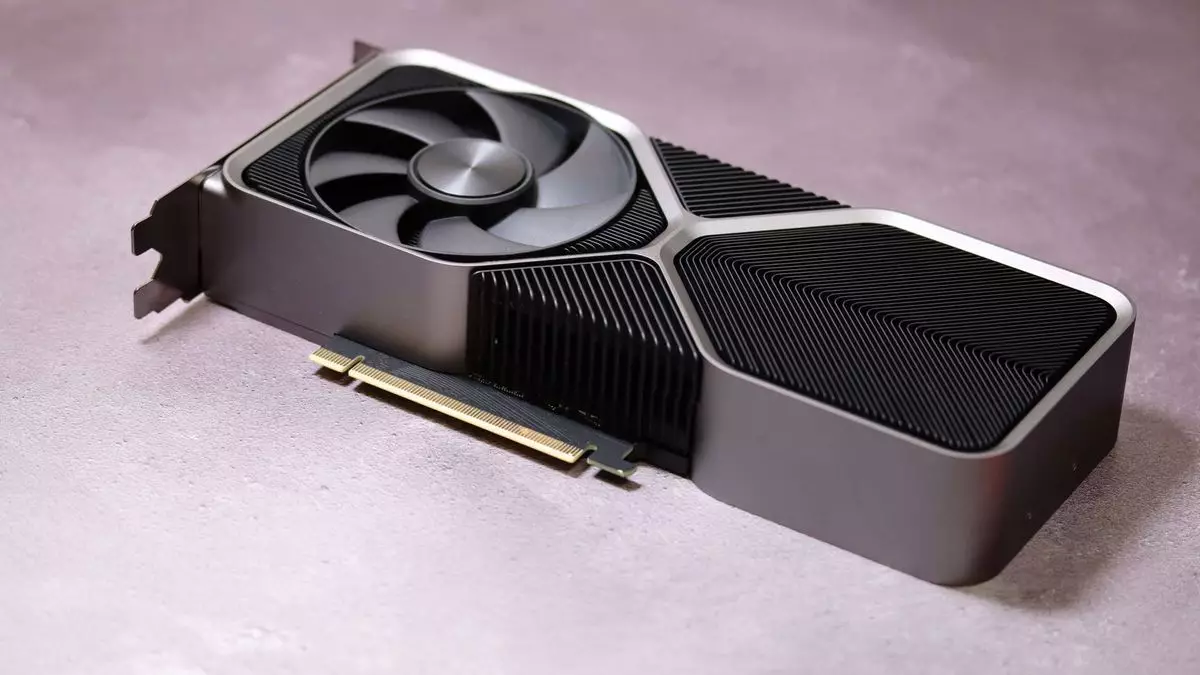As we approach the start of 2025, the excitement surrounding Nvidia’s next-generation graphics cards is palpable, but is it warranted? With various rumors circulating about their potential features and launch schedule, it is crucial to sift through the noise to establish what we can realistically expect and how this may affect the gaming landscape. The anticipated showcase at the Consumer Electronics Show (CES) in January promises a first look at the RTX 5070, RTX 5080, and RTX 5090, but how does this align with the industry’s trajectory?
Historically, Nvidia has prioritized showcasing their highest-end models, often relegating mid-range options to follow-up announcements. However, the rumor is that the RTX 5070 will launch concurrently with its more powerful counterparts. This move could signal a shift in marketing strategy aimed at capturing both budget-conscious gamers and high-end enthusiasts simultaneously. This is significant because while the high-end market remains lucrative, the mid-range segment is critical for sustained sales and brand loyalty; thus, it appears that Nvidia is keen on making a stronger impression in this area.
Adding to the intrigue is the reported specification of the RTX 5070, notably its claimed 12 GB of VRAM and an upgraded 192-bit memory bus. If true, these features suggest a substantial enhancement in performance, especially for those aiming for 4K gaming. However, many users have voiced concerns that this configuration might trigger a push toward higher-end models, given that increasingly demanding games can easily consume more than 12 GB of VRAM at high settings. Hence, Nvidia’s strategy appears to walk a precarious line: while they seek to provide capable mid-range options, they may simultaneously risk alienating 4K gamers who would benefit from a higher VRAM capacity.
One of the more compelling angles of this rumor is Nvidia’s emphasis on cache architecture over sheer memory size. The firm has been vocal about its belief that performance does not hinge solely on the amount of VRAM available. Instead, Nvidia argues that efficient data retrieval from L1 and L2 caches is crucial, enabling GPUs to operate at optimal performance levels with potentially less VRAM. This perspective challenges the conventional wisdom among gamers that more VRAM equates to better performance, suggesting that a thorough understanding of how GPUs manage memory is essential for evaluating their capabilities.
Furthermore, some titles are designed to utilize as much VRAM as possible when available, potentially misleading consumers into thinking more VRAM necessarily translates to a faster experience. As Nvidia continues to refine its GPU architecture, it may shift industry expectations away from a sole focus on VRAM capacity toward holistic performance metrics, which reflects a more nuanced approach in product development.
The reported power requirements for the upcoming GPUs seem to indicate a trend where increased gaming performance comes at the cost of greater power consumption. The RTX 5070 is rumored to draw up to 250 W, which marks an elevation from previous generations. Interestingly, the power draw for higher-end RTX cards is even more pronounced, suggesting that this generation’s focus lies in maximizing performance for the demanding games of the future. However, this can lead to complications related to power supply requirements and thermal management, potentially making upgrades a more daunting task for consumers upgrading their systems.
Whether gamers are ready to tackle these new requirements remains uncertain, especially given that many are grappling with both rising hardware prices and the challenges associated with energy efficiency. This scenario may lead some consumers to reconsider their purchase plans, weighing the performance enhancements against the overall costs involved, including the necessary upgrades to their existing setups.
As the launch of Nvidia’s new line-up approaches, one cannot ignore the competitive dynamics at play, particularly considering AMD’s upcoming RDNA 4 graphics cards rumored to make their debut at CES simultaneously. While Nvidia’s established dominance in the market often gives it a leg up, AMD is keen on narrowing the margin between performance and price in the mid-range segment. It remains to be seen how Nvidia will position its offerings in that environment and whether it feels sufficient competitive pressure to reconsider its strategy, especially around RAM specifications.
Ultimately, as we await the official announcements, the landscape remains ripe for speculation and intrigue. The alleged features and specifications of the upcoming RTX cards may indeed signal an evolution in gaming hardware, but materializing expectations must align with market realities to ensure that consumers feel they are getting their money’s worth. With anticipation for CES 2025 mounting, one can only hope that Nvidia’s unveiling will deliver substantial advancements rather than simply more of the same.

